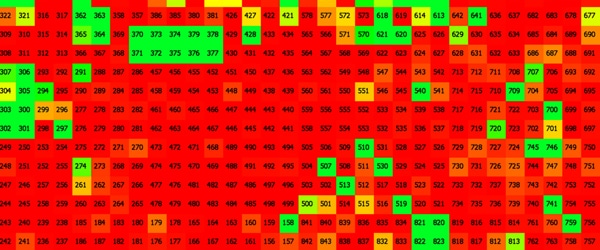Whenever you make up a solution or use a purchased reagent in the lab, you trust the work of a whole army of people and equipment. If any one of those links in the chain has a technical problem or makes a mistake, then your reagent might turn out to be faulty.
And that can cause you all sorts of problems.
This article explains a simple step that lets you ensure that if something went wrong with one of your reagents, you are not left guessing which of your experiments have been affected.
Holy Water… What could be simpler?
Take something simple like molecular biology grade water. It’s just water that has been purified by various means. Some people even call it Holy Water.
But when you use your bottle of the stuff, you are trusting that the purification went fine, that the filters used were up to scratch and that the technician didn’t accidentally flick a nuclease-infested bogey into the batch.
Nuclease-free becomes nuclease-jamboree?
So what happens if your experiments suddenly start to go wrong? Your plasmids are being degraded, or your RNA preps are just a mush of nucleotides?
By careful elimination, you figure out that the problem is your supposedly trustworthy, nuclease-free water. Looks like the technician DID flick a bogey in the batch after all (or something, somewhere went wrong at least).
Now you have a problem
You congratulate yourself on figuring out the source of the experimental failure. But now you have another problem.
Just how many experiments have you done with this faulty reagent? Which results can you trust? And have any of your colleagues been using it?
Unless you are lucky and you had just started using the reagent, you might never know the answers to these questions. So any number of your experiments could be compromised and you’d have no idea of the extent of the problem.
And the solution
However, if you had noted down in your lab book the batch number of the water you used in each experiment, then you wouldn’t have a problem at all.
As you might expect, all reagents are made in batches in the vendor’s manufacturing facility. And each batch has its own number, so that the vendor can do quality control tests and identify the parts of its inventory that need to be thrown away if a problem arises.
So whenever you use a reagent, note down the batch number in your lab book and then you’ll always be able to track which batch you use in each experiment.
Obviously, this holds for whatever reagent you are using, whether its sodium chloride, or cell culture medium or Holy Water. And if you are making up stock solutions, it is good practice to give your stock solutions batch numbers, and note down the batch numbers of each of the reagents you use in the stock solution.
That way you will always be in charge of your own experimental quality control.







